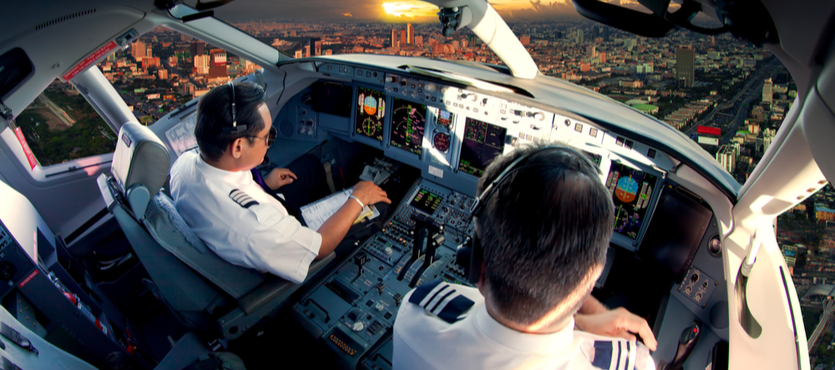Commercial pilots fly for commercial airlines, but can also fly charter flights, emergency aircraft, rescue flights, and more. As a commercial pilot you will learn not only to operate, control, and fly planes but also how to ensure the weight of the plane you are flying is balanced, communicate with air traffic controllers and other airport personnel, navigate, monitor gauges, and perform emergency procedures. Commercial pilots are required to have a minimum of 1,500 flight hours logged. To become a licensed commercial pilot, 250 hours of flying time in addition to passing the FAA (Federal Aviation Administration) practical test is required. Commercial airlines require a licensed commercial pilot to acquire Airline Transport Pilot (ATP) certification and many also require a two years of college education or a bachelor’s degree. Let’s explore the steps to becoming a licensed commercial pilot.
- Basic Requirements – To meet the requirements for a commercial pilot’s license you must be at least 18 years old. You will also need to communicate effectively and pass a physical and vision examination. You will be required to demonstrate your aeronautical knowledge as well as logbook endorsements from an authorized flight instructor verifying your experience level.
- Private Pilot Training – Commercial pilots begin training as private pilots learning the fundamentals of flight, operations, maintenance, and communications. Most flight schools offer prerequisite private training for commercial pilot training allowing you to achieve the needed levels.
- Flight Hours – The required 250 logged hours include flying solo and pilot-in-command, comprehensive instrument training, and piloting a plane with specified gear. It also includes a designated number of landings and takeoffs as well as cross-country flights in daylight and nighttime conditions.
- Required Testing – To become a licensed commercial pilot, you must pass the FAA (Federal Aviation Administration practical test given by a registered official. During the test, you must successful complete operational tasks, flying proficiency, and your ability to meet airline industry standards. You will also need to successfully complete the written exam which tests your knowledge of safety, navigation, and regulations.
- Additional Certification for Commercial Airlines – To be qualified to work for a commercial airline, you will need to become a licensed airline transport pilot. Additional requirements specify you must be at least 23 with a minimum of 1,500 hours of logged flight time and able to pass the FAA exams. Some commercial airlines require additional experience or education which may include a bachelor’s degree to a minimum of two years of college education.
The Professional Pilot Program at Airlink Flight School
At Airlink Flight School we can help you become a commercial pilot and meet your goals. Our students earn their private pilot’s license, instrument rating, and commercial pilot’s license for both single and multi-engine planes. Our courses include flight and ground lessons, study materials, the FAA knowledge test and FAA check rides.
Our Accelerated Flight Training program, which saves you time and money, is used successfully by Flight Schools and Airlines to train pilots for flight crews. Featuring one-on-one customized training and structured procedures, students can be trained as private pilots in only 13 days. Our Commercial Pilot’s License training can be completed successfully in 12 months or less.
Currently, we have 2 locations for our Part 141 commercial program. Waterville Airport in Maine, where you can experience Boston and New York high-density airspace. During your training, you will fly as far south as Miami, Florida, always training in real weather conditions. Our second location is in Melbourne, Florida. Florida offers an extremely high number of flyable days per years and we can cross train between our two locations. During the program, you will fly multiple times per week, often twice daily. When you aren’t flying you will be in class or in the simulator, studying for your exam or preparing for your next flight. Are you ready to fly?

